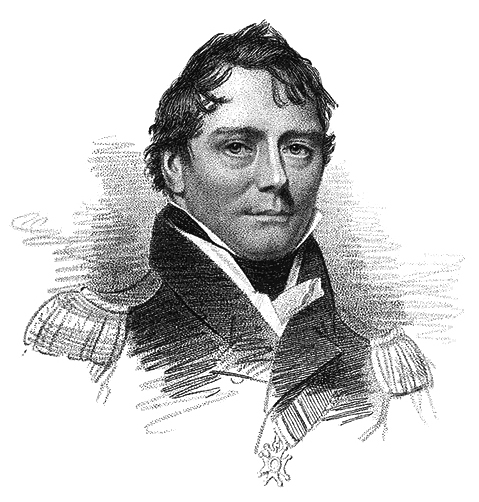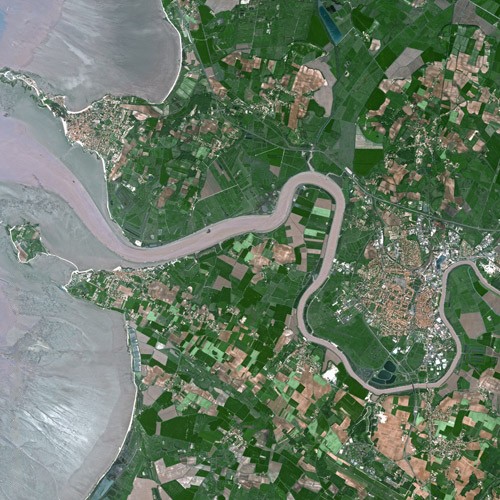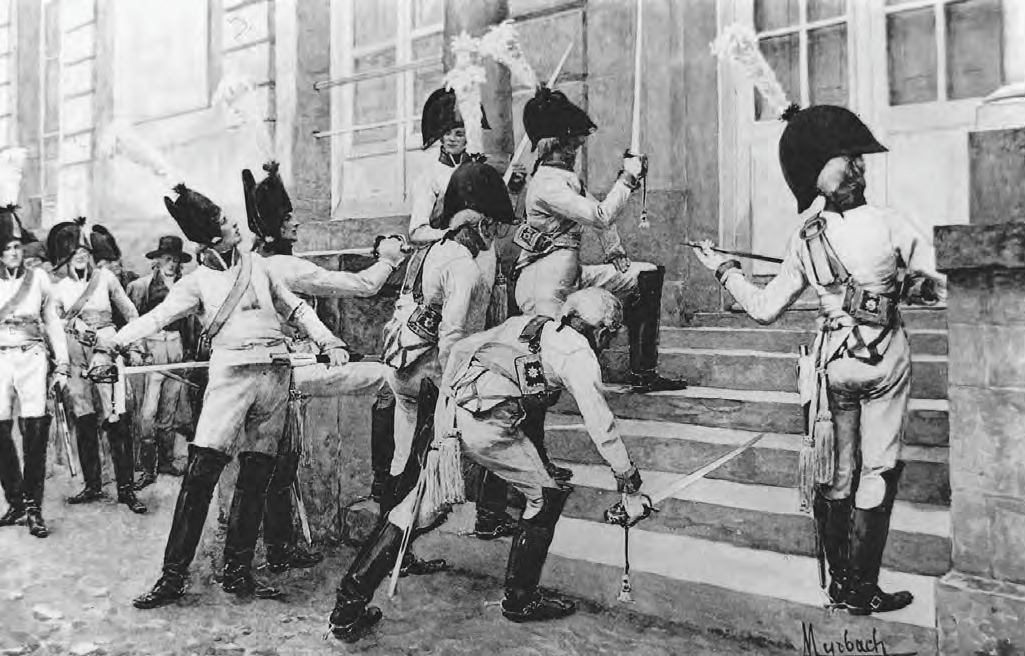|
French Frigate Minerve (1805)
HMS ''Alceste'' was built at Rochefort in 1804 for the French Navy as ''Minerve'', an . In the spring of 1806, prior to her capture, she engaged , then under Lord Cochrane. During the duel she ran aground but Cochrane had to abort his attack when French reinforcements appeared. The British captured her in an action on 25 September 1806, and the Royal Navy took ''Minerve'' into service as ''Alceste'' in March 1807; ''Alceste'' then continued to serve throughout the Napoleonic Wars. On 29 November 1811, ''Alceste'' led a British squadron that captured a French military convoy carrying more than 200 cannon to Trieste in the Balkans. After this loss, Napoleon changed the direction of his planned eastward expansion in 1812 from the Balkans to Russia. The British historian James Henderson has suggested that the two events were linked, and may have changed the course of the war. In 1814, ''Alceste'' was converted to a troopship and used to transport British soldiers to North Ameri ... [...More Info...] [...Related Items...] OR: [Wikipedia] [Google] [Baidu] |
Rochefort, Charente-Maritime
Rochefort ( oc, Ròchafòrt), unofficially Rochefort-sur-Mer (; oc, Ròchafòrt de Mar, link=no) for disambiguation, is a city and communes of France, commune in Southwestern France, a port on the Charente (river), Charente estuary. It is a Subprefectures in France, subprefecture of the Charente-Maritime Departments of France, department, located in the administrative regions of France, administrative region of Nouvelle-Aquitaine (before 2015: Poitou-Charentes). In 2018, it had a population of 23,583. Geography Rochefort lies on the river Charente (river), Charente, close to its outflow into the Atlantic Ocean. It is about 30 km southeast of La Rochelle. Rochefort station has rail connections to La Rochelle, Nantes and Bordeaux. History In December 1665, Rochefort was chosen by Jean-Baptiste Colbert as a place of "refuge, defence and supply" for the French Navy. The Arsenal de Rochefort served as a naval base and dockyard until it closed in 1926. In September 1757, Rochefor ... [...More Info...] [...Related Items...] OR: [Wikipedia] [Google] [Baidu] |
William Amherst, 1st Earl Amherst
William Pitt Amherst, 1st Earl Amherst, GCH, PC (14 January 177313 March 1857) was a British diplomat and colonial administrator. He was Governor-General of India between 1823 and 1828. Background and education Born at Bath, Somerset, Amherst was the son of William Amherst and Elizabeth, daughter of Thomas Paterson. He was the grand-nephew of Jeffrey Amherst, 1st Baron Amherst, and succeeded to his title in 1797 according to a special remainder in the letters patent. He was educated at Westminster School and Christ Church, Oxford. Ambassador extraordinary to China In 1816 he was sent as ambassador extraordinary to the court of China's Qing dynasty, with a view of establishing more satisfactory commercial relations between China and Great Britain. On arriving at Pei Ho (Baihe, today's Haihe), he was given to understand that he could only be admitted to the Jiaqing Emperor's presence on condition of performing the kowtow. To this, Amherst, following the advice of Sir Geor ... [...More Info...] [...Related Items...] OR: [Wikipedia] [Google] [Baidu] |
Île-d'Aix
Île-d'Aix () is a commune and an island in the Charente-Maritime department, region of Nouvelle-Aquitaine (before 2015: Poitou-Charentes), off the west coast of France. It occupies the territory of the small Isle of Aix (''île d'Aix''), in the Atlantic Ocean. It is a popular place for tourist day-trips during the summer months. Location Île-d'Aix is located at the mouth of the river Charente, between Oléron Island and the coast of mainland France. The island is also close to Fort Boyard. History During the Roman period, it seems the island was connected to the continent at low tide. It finally took its current shape around 1500. In 1067, Isembert de Châtelaillon gave the island to the order of Cluny. A small convent was established, which depended on St Martin in Île de Ré. At the end of the 12th century, France and England fought for the possession of the island. Until 1286, the island was located at the boundary between the French and the English Saintonge, formed ... [...More Info...] [...Related Items...] OR: [Wikipedia] [Google] [Baidu] |
Ships-of-the-line
A ship of the line was a type of naval warship constructed during the Age of Sail from the 17th century to the mid-19th century. The ship of the line was designed for the naval tactic known as the line of battle, which depended on the two columns of opposing warships maneuvering to volley fire with the cannons along their broadsides. In conflicts where opposing ships were both able to fire from their broadsides, the opponent with more cannons firingand therefore more firepowertypically had an advantage. Since these engagements were almost invariably won by the heaviest ships carrying more of the most powerful guns, the natural progression was to build sailing vessels that were the largest and most powerful of their time. From the end of the 1840s, the introduction of steam power brought less dependence on the wind in battle and led to the construction of screw-driven wooden-hulled ships of the line; a number of purely sail-powered ships were converted to this propulsion mechani ... [...More Info...] [...Related Items...] OR: [Wikipedia] [Google] [Baidu] |
Zacharie Allemand
Zacharie Jacques Théodore Allemand (1 May 1762, in Port-Louis – 2 March 1826, in Toulon) was a French admiral. Biography Early career Allemand was born to a captain of the East Indian Company. Orphaned at an early age, he started his sailing career at 12 as an apprentice on ''Superbe'', an East Indiaman. In 1778, at the outbreak of the American War of Independence, he volunteered for Navy service of ''Sévère'', in Suffren's squadron. By the end of the war, Allemand had risen to lieutenant de frégate and served on ''Annibal''. He later went on to serve on the fluyts ''Baleine'' and ''Outarde'' in the Indian Ocean. In late 1786, Allemand returned to France to benefit from a reform of the Navy by which he could obtain a permanent commission of ''sous- lieutenant de vaisseau'' for his service. In this capacity, he served on a number of frigates in the Caribbean and off America. French Revolution and First Empire Allemand was promoted to full lieutenant in 1792, and had ris ... [...More Info...] [...Related Items...] OR: [Wikipedia] [Google] [Baidu] |
War Of The Fourth Coalition
The Fourth Coalition fought against Napoleon's French Empire and were defeated in a war spanning 1806–1807. The main coalition partners were Prussia and Russia with Saxony, Sweden, and Great Britain also contributing. Excluding Prussia, some members of the coalition had previously been fighting France as part of the Third Coalition, and there was no intervening period of general peace. On 9 October 1806, Prussia declared war on France and joined a renewed coalition, fearing the rise in French power after the defeat of Austria and establishment of the French-sponsored Confederation of the Rhine in addition to having learned of French plans to cede Prussian-desired Hannover to Britain in exchange for peace. Prussia and Russia mobilized for a fresh campaign with Prussia massing troops in Saxony. Napoleon decisively defeated the Prussians in an expeditious campaign that culminated at the Battle of Jena–Auerstedt on 14 October 1806. French forces under Napoleon occupied Prus ... [...More Info...] [...Related Items...] OR: [Wikipedia] [Google] [Baidu] |
Naval Long Gun
In historical naval usage, a long gun was the standard type of cannon mounted by a sailing vessel, so called to distinguish it from the much shorter carronades. The long gun was known for its increased range and improved mobility in comparison to its larger precursors. This allowed the long gun to establish itself as the best form of artillery to pursue an enemy. In informal usage, the length was combined with the weight of shot, yielding terms like "long nines", referring to full-length, 9-pounder guns. Firing a long gun Cannons are fired through a laborious process that involves the help of many people. It begins by cleaning out the barrel of the cannon with a wet swab. This helps to ensure that any left over embers from the last firing are extinguished before the gunpowder is put in. Once the barrel is clean, the gunpowder is put into the base of the cannon, either loosely or in cloth bags. A piece of cloth or rope is put in after the gunpowder to assure that it stays tightly p ... [...More Info...] [...Related Items...] OR: [Wikipedia] [Google] [Baidu] |
Hold (ship)
120px, View of the hold of a container ship A ship's hold or cargo hold is a space for carrying cargo in the ship's compartment. Description Cargo in holds may be either packaged in crates, bales, etc., or unpackaged (bulk cargo). Access to holds is by a large hatch at the top. Ships have had holds for centuries; an alternative way to carry cargo is in standardized shipping containers, which may be loaded into appropriate holds or carried on deck. Holds in older ships were below the orlop deck, the lower part of the interior of a ship's hull, especially when considered as storage space, as for cargo. In later merchant vessels it extended up through the decks to the underside of the weather deck. Some ships have built in cranes and can load and unload their own cargo. Other ships must have dock side cranes or gantry cranes to load and unload. Cargo hatch A cargo hatch or deck hatch or hatchway is type of door used on ships and boats to cover the opening to the cargo hold ... [...More Info...] [...Related Items...] OR: [Wikipedia] [Google] [Baidu] |
Beam (nautical)
The beam of a ship is its width at its widest point. The maximum beam (BMAX) is the distance between planes passing through the outer extremities of the ship, beam of the hull (BH) only includes permanently fixed parts of the hull, and beam at waterline (BWL) is the maximum width where the hull intersects the surface of the water. Generally speaking, the wider the beam of a ship (or boat), the more initial stability it has, at the expense of secondary stability in the event of a capsize, where more energy is required to right the vessel from its inverted position. A ship that heels on her ''beam ends'' has her deck beams nearly vertical. Typical values Typical length-to-beam ratios ( aspect ratios) for small sailboats are from 2:1 (dinghies to trailerable sailboats around ) to 5:1 (racing sailboats over ). Large ships have widely varying beam ratios, some as large as 20:1. Rowing shells designed for flatwater racing may have length to beam ratios as high as 30:1, while a cor ... [...More Info...] [...Related Items...] OR: [Wikipedia] [Google] [Baidu] |
Ship Launching
Ceremonial ship launching involves the performance of ceremonies associated with the process of transferring a vessel to the water. It is a nautical tradition in many cultures, dating back thousands of years, to accompany the physical process with ceremonies which have been observed as public celebration and a solemn blessing, usually but not always, in association with the launch itself. Ship launching imposes stresses on the ship not met during normal operation and, in addition to the size and weight of the vessel, represents a considerable engineering challenge as well as a public spectacle. The process also involves many traditions intended to invite good luck, such as christening by breaking a sacrificial bottle of champagne over the bow as the ship is named aloud and launched. Methods There are three principal methods of conveying a new ship from building site to water, only two of which are called "launching". The oldest, most familiar, and most widely used is th ... [...More Info...] [...Related Items...] OR: [Wikipedia] [Google] [Baidu] |
Pierre-Jacques-Nicolas Rolland
Baron Pierre-Jacques-Nicolas Rolland (17 June 1769 – 9 December 1837) was a French naval architect and engineer. Pierre-Jacques-Nicolas Rolland was born on 17 June 1769 in the harbour town of Brest, into the family of Pierre Nicolas Rolland, engineer-constructor of the Brest Port. He followed his father's footsteps and in 1785, at the age of 16 entered the service at Rochefort Port. In 1795 he fought the British fleet at the naval battle of Genoa on board the French ship ''Sans Culotte''.Better known as ''Orient'', as she was named at the Battle of the Nile Ten years later he was already an established engineer and shortly thereafter chief engineer. In 1802 the launching (under his direction) of two major ships, the ''République-Française'' and the ''Magnanime'', drew the attention of Denis Decrès, Minister of the Navy, and of Napoléon Bonaparte himself to the young engineer. In 1808, Bonaparte visited Rochefort's naval dockyard and was highly satisfied with Rolland's wor ... [...More Info...] [...Related Items...] OR: [Wikipedia] [Google] [Baidu] |






